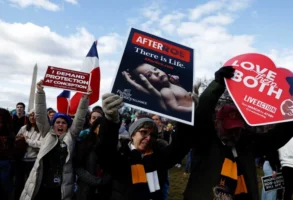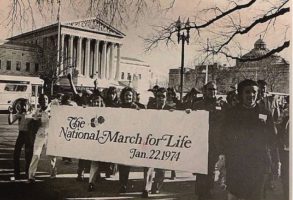
Published July 10, 2020
One of the arguments regularly circulating on social media in defense of razing statues is the rather mindless declaration that “statues aren’t history.”
Of course they aren’t. But none of us who opposes the indiscriminate destruction of public memorials by feckless mobs does so because we believe statues are history.
Our objection, rather, is to the willful ignorance of history exhibited by those who, under cover of night, topple monuments to great men and, in the light of day, justify their anarchy by ripping those men from their context and placing them on trial for their lack of 21st-century progressivism.
Statues need not be history for us to criticize this behavior.
But the problem with the anti-statue campaign isn’t a problem merely with mob rule as such. The urge to remove monuments as a means of absolving ourselves of certain parts of our country’s history has seeped into the ruling class, too, as politicians have begun to capitulate to the mob’s demands.
Consider the recent case of Father Junipero Serra, a Roman Catholic saint and a Franciscan friar who, as a missionary, founded the first nine Spanish missions in 18th-century California, teaching local tribes about Christianity and helping them to farm using modernized forms of agriculture.
Last month, during a riot in San Francisco’s Golden Gate Park, several hundred people knocked over a statue of Serra, along with monuments to Ulysses S. Grant and Francis Scott Key, before moving on to deface a bust of author Miguel de Cervantes. On the same day, rioters in Los Angeles destroyed another statue of the saint.
On the Fourth of July, rioters in Sacramento attacked a third statue of Serra, burning its face before ripping down the monument and striking it with a sledgehammer while chanting “Rise up, my people, rise up” and dancing atop it.
These acts of pointless vandalism were later justified as having been carried out in the name of justice for the genocide of indigenous peoples — a genocide in which, thus far, no one has been able to implicate Father Serra.
But that hasn’t stopped leaders from hastily acquiescing to public pressure, getting the job done in places where the long arm of the mob had not yet reached. In Ventura, Calif., the city council is mulling formally removing a statue of Serra near city hall that had been deemed “toxic” by progressive brigades. The other three devastated statues of the saint have yet to be restored to their rightful places, and it seems rather unlikely that we’ll see them standing again anytime soon.
There is much to lament about this newfound passion for dismantling monuments and then sanctifying those acts of vandalism with platitudinous nonsense about healing our country from its many sins. The entire process is far less about thoughtfully acknowledging the deficiencies of leaders past than it is about ill-informed citizens’ flexing raw power and watching elected leaders dutifully fall in line.
Even at its most considered, the crusade to remove statues seems utterly devoid of any desire to consider our country’s finest leaders in their historical context and understand the fullness of their lives — or so we must conclude, as we watch Christopher Columbus, Frederick Douglass, and George Washington each take their turn on the chopping block. Far from oppressing the Native Americans residing in his missions, Father Serra championed them at a time when few would, drafting an extensive bill of rights on their behalf and walking from California to Mexico City to deliver it to the government.
But it seems unlikely that the rioters determined to erase him from public view are aware of this fact, and even if they were, it seems unlikely that they would care. That’s the heart of the problem with removing statues before sincerely reckoning with the people and historical moments they represent: How can we decide what to make of our history and the men who moved it without knowing the first thing about them?
We are witnessing the extension of thoughtless campus “cancel culture” into the world of public memory and monument, except that the men with targets on their backs are no longer able to defend themselves before the unjust tribunal of the seething mob. It exemplifies the trouble with an ideology so intent on punishing sin and so determined to withhold forgiveness.
In the end, I suspect, none of us wants to live in a society where we are forever remembered for the worst things we’ve ever said or done. We should not use that deficient, inhuman standard to judge most men of history. In the case of statues, as in life, men need not be saints to deserve more than that.
Alexandra DeSanctis is a staff writer for National Review and a visiting fellow at the Ethics and Public Policy Center.








